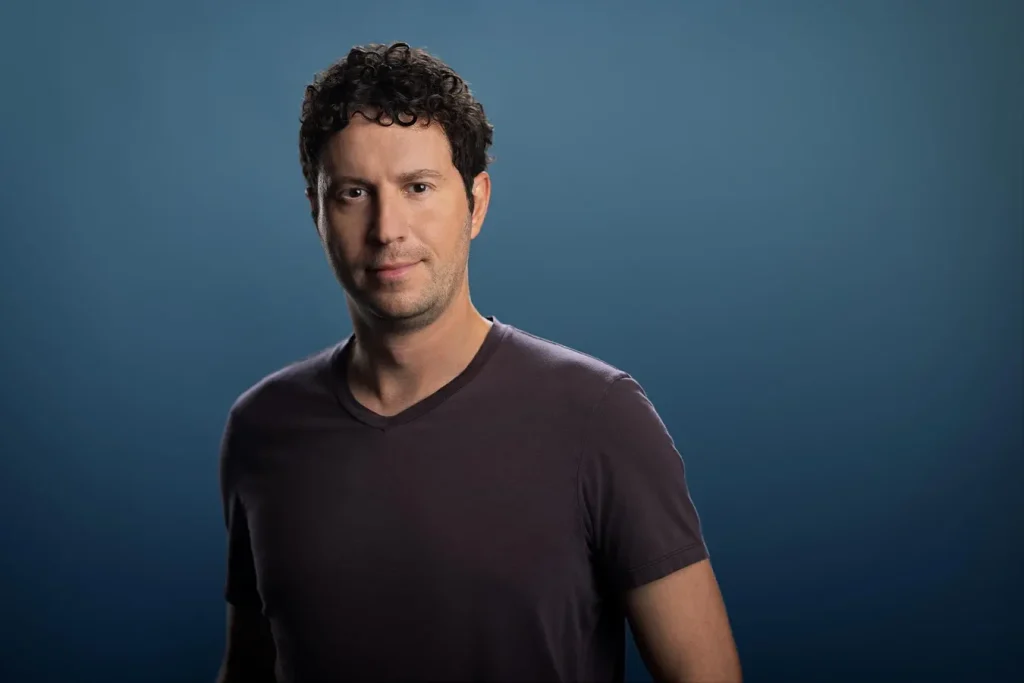OpenEvidence: Revolutionizing Medical Intelligence with AI
In the rapidly evolving landscape of healthcare technology, OpenEvidence has emerged as a transformative force, creating an AI search tool that’s quickly becoming indispensable to the medical community. Recently valued at a staggering $6 billion following a $200 million investment round led by Google’s venture arm GV, this Miami-based startup has seen its worth nearly double since July. The company’s meteoric rise has similarly boosted the fortune of its co-founder and CEO Daniel Nadler, whose net worth has climbed to an estimated $3.6 billion. Yet Nadler remains remarkably unfazed by his growing wealth, joking that he “just works 100 hours a week and eats cereal,” suggesting that his passion for the mission far outweighs personal financial gain. This latest funding round attracted an impressive roster of investors, including Sequoia, Kleiner Perkins, Blackstone, Thrive Capital, Coatue, Bond, and Craft, demonstrating the tremendous confidence the investment community has in OpenEvidence’s potential to transform healthcare.
The company’s core offering functions as a “ChatGPT for doctors,” addressing a critical challenge in modern medicine: the overwhelming volume of medical research published daily. OpenEvidence’s proprietary algorithms sift through millions of peer-reviewed publications from prestigious journals like the New England Journal of Medicine and the Journal of the American Medical Association, delivering physicians concise, relevant information with full citations to the original research. This service comes at no cost to verified doctors, with the company generating revenue through an advertising model similar to Google’s approach. OpenEvidence further strengthened its advertising capabilities in September by acquiring AI advertising company Amaro, enhancing its ability to analyze and deploy ads more efficiently. The medical community has enthusiastically embraced the tool, with adoption reaching an impressive 40% of physicians across the United States. Since July alone, the platform’s monthly clinical consultations have surged from 10 million to 16.5 million – a growth trajectory that Nadler notes would typically take years rather than months.
While the current search capabilities of OpenEvidence are already revolutionizing how doctors access medical knowledge, Nadler’s vision extends far beyond simple information retrieval. He sees the platform evolving toward what he calls “medical superintelligence” – not merely finding existing research but actively expanding the frontiers of medical knowledge. Drawing an analogy to how Google Street View revolutionized mapping, Nadler envisions doctors becoming like “Google cars with funny cameras,” with their observations of rare diseases and complex clinical cases becoming part of OpenEvidence’s growing knowledge base. This approach represents not just crowdsourcing but “expert sourcing” of medical knowledge, leveraging the collective expertise of physicians nationwide to build a comprehensive understanding of medicine that exceeds what any individual doctor could achieve. The potential impact of such a system on healthcare quality and outcomes could be profound, potentially democratizing access to specialized medical knowledge across diverse healthcare settings.
The story of OpenEvidence is inseparable from that of its founder. Nadler, a 42-year-old with a Harvard Ph.D. in political economy, brings significant entrepreneurial experience to the venture. His previous company, AI analytics startup Kensho, sold for $550 million in 2018, providing him with the capital to invest substantially in OpenEvidence from the outset. This personal investment has enabled Nadler to retain an estimated 60% stake in the company, giving him both significant control over its direction and a substantial share in its financial success. The July funding round of $210 million, also led by GV, provided additional resources to fuel the company’s rapid growth while maintaining Nadler’s vision for the platform’s development. His commitment to addressing the fundamental challenge of information overload in medicine drives the company’s mission and has attracted top-tier investors who share his belief in AI’s potential to transform healthcare.
The problem OpenEvidence aims to solve is indeed substantial and growing more acute by the day. Medical literature is expanding at an unprecedented rate, doubling approximately every five years. This explosion of information coincides with increasingly complex treatment options like gene therapies and a growing understanding of intricate disease interactions and drug effects. The traditional methods of keeping up with medical research – reading journals, attending conferences, consulting colleagues – simply cannot scale to match this information deluge. By providing an AI-powered solution that can process and contextualize this vast body of knowledge, OpenEvidence offers doctors a lifeline in navigating the complexity of modern medicine. The company’s financial prospects reflect the value of this solution, with annualized revenue projected to reach $100 million by 2026, up from the $50 million reported in July. Nadler emphasizes the importance of their early market position, noting that “something has to be 100 times better to switch from a free product,” highlighting the significant barriers to entry for potential competitors once doctors have integrated OpenEvidence into their workflow.
As OpenEvidence continues its rapid expansion, the implications for healthcare extend far beyond convenience for doctors. By democratizing access to the latest medical research and eventually building toward medical superintelligence, the platform has the potential to reduce disparities in care quality, accelerate the adoption of best practices, and ultimately improve patient outcomes across diverse healthcare settings. The company’s trajectory illustrates how thoughtfully designed AI systems can address complex challenges in specialized fields like medicine, augmenting human expertise rather than replacing it. Nadler’s vision of collaborative intelligence – where AI systems and medical professionals work together to expand the boundaries of medical knowledge – represents a promising path forward in an era where both information and technology are proliferating at unprecedented rates. As OpenEvidence continues to evolve from a search tool toward a more comprehensive medical intelligence platform, it stands as a compelling example of how artificial intelligence might help solve some of our most pressing healthcare challenges.






